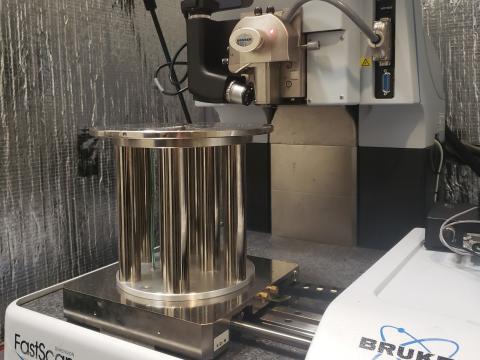Atomic force microscopy (AFM) uses a scanning probe to map surface morphology to nanometers laterally and angstroms (Å) vertically. It can quantify surface roughness and the size of topographic features and give information about mechanical properties, adhesion, and the size of chemical domains. Special operational modes are also available to measure things such as magnetic domains and conductivity.
Typical Applications
- Imaging, measuring, and manipulating matter at the nanoscale
- Gathers information by “feeling” the surface with a mechanical probe
- Variable-deflection mode is useful for small, high-speed atomic resolution scans
- Lateral force mode measures frictional forces on a surface
- Phase imaging mode can distinguish areas on a sample with differing properties (such as friction, adhesion, and viscoelasticity)
- Force modulation mode allows comparison of both height and material properties
Instruments

Bruker Dimension FastScan AFM
- Imaging of surface atoms with a lateral resolution of 1Å and a vertical resolution of 0.1Å
- Analysis under water and in controlled environments
- Atomic-scale surface manipulation and modification
- Quantitative measurement of surface roughness
- Biorecognition imaging (with functionalized tips)
Instrument Contact: Stephen Golledge, PhD
